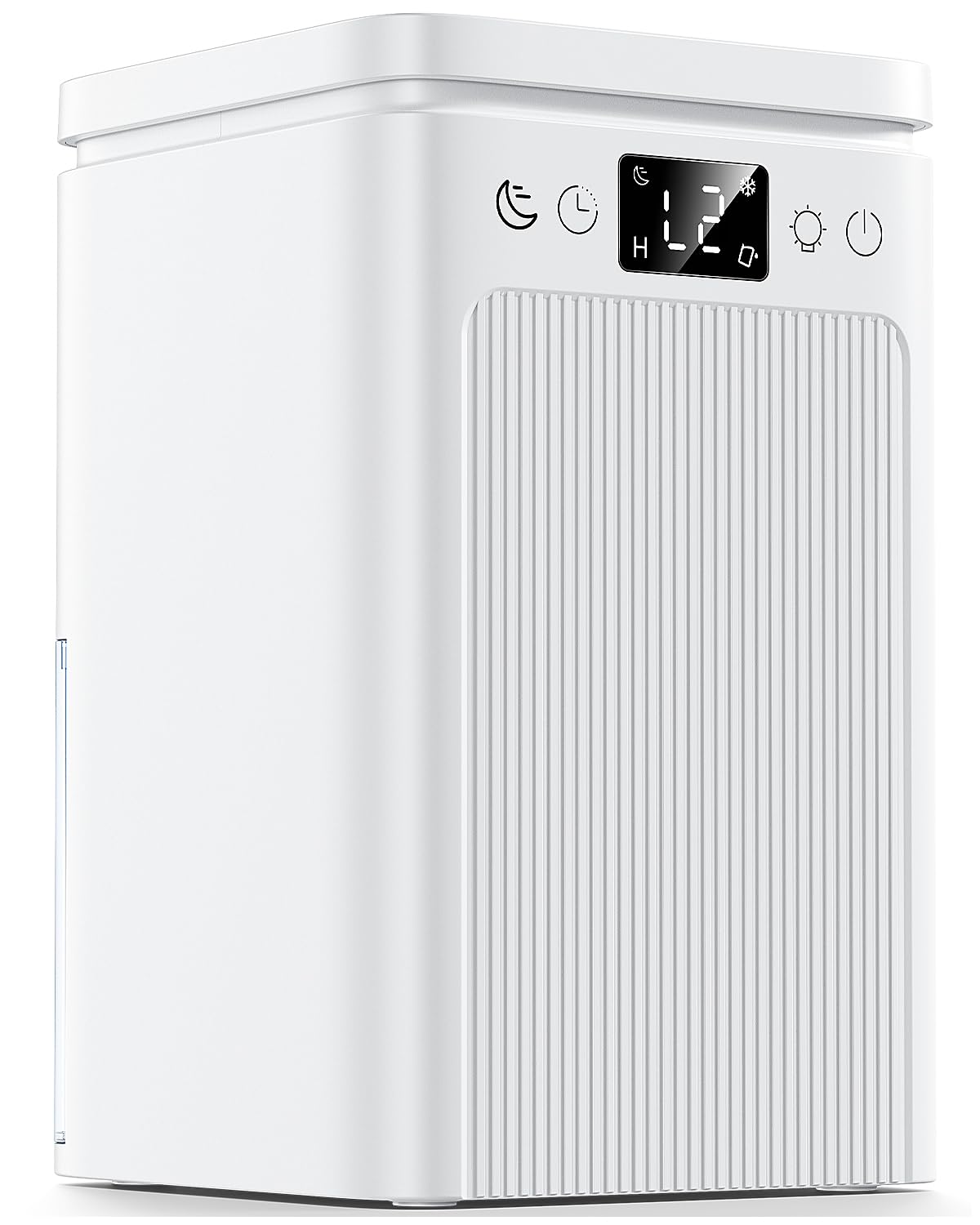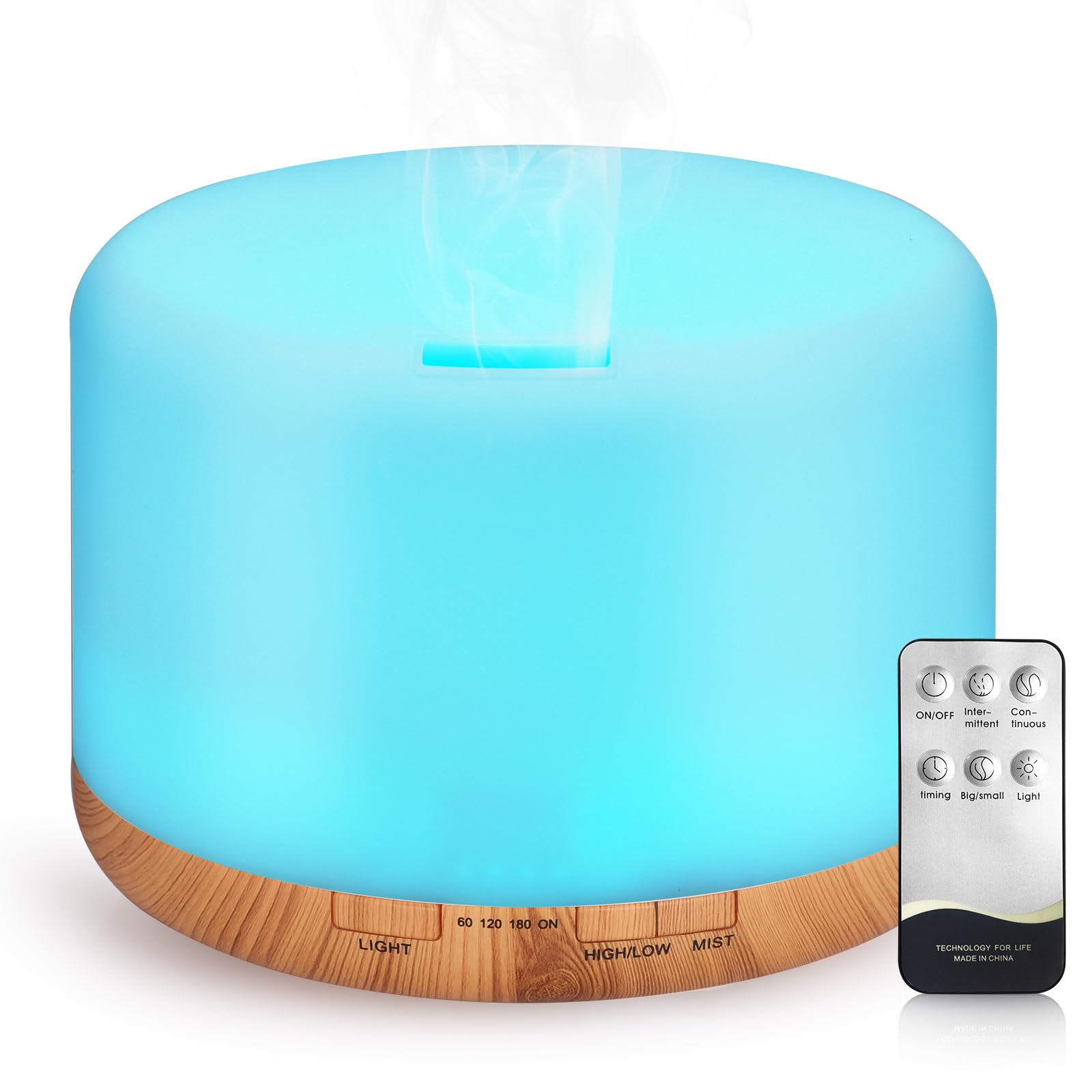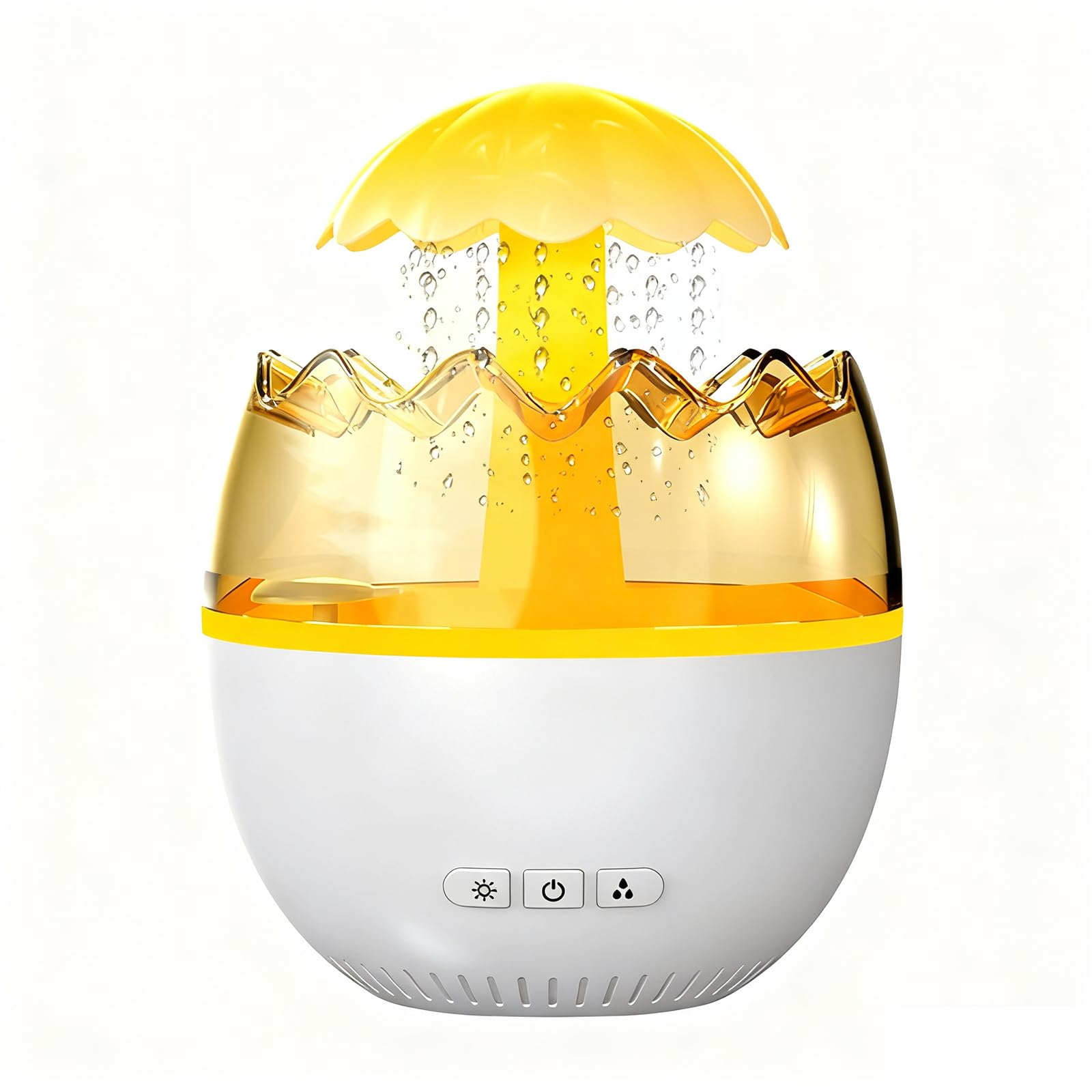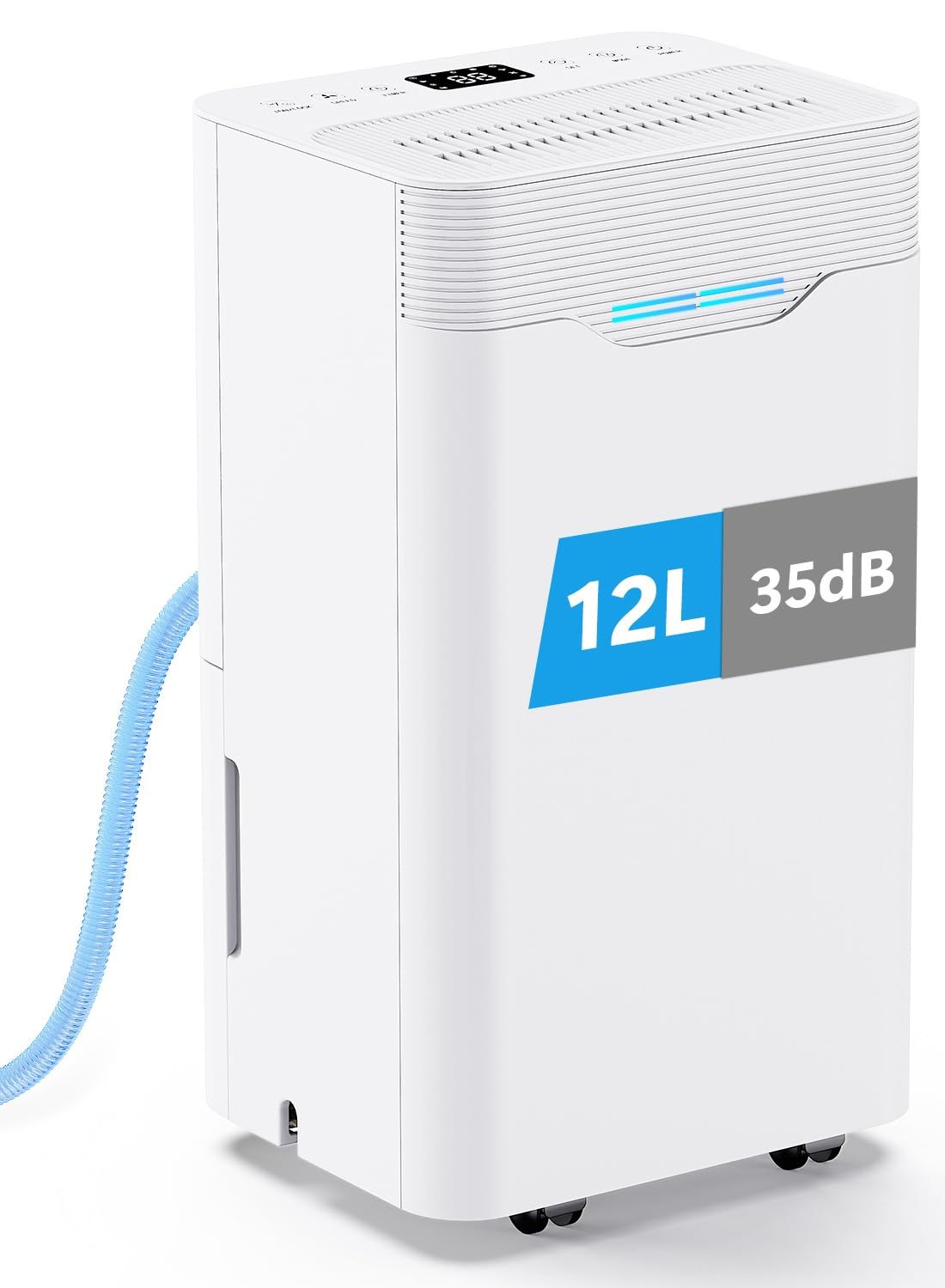Blocked noses and damp rooms often show up together in UK winters. Some people reach for a humidifier to soothe dry air, while others swear by a dehumidifier to clear condensation. Both can help, but in different situations. This guide explains when to add moisture, when to remove it, and how to test your room so you choose the right tool for easier breathing and answering the age old question, humidifier or dehumidifier for a stuffy nose?
Dry bedrooms benefit from humidifiers sized for the space.
Start with a simple humidity check
Buy a small digital hygrometer and note your bedroom’s relative humidity morning and evening for a few days. Most people feel comfortable around forty to sixty percent. If readings sit below forty for long stretches, air may be too dry. If readings sit well above sixty, the room is too moist and may feel stuffy with window condensation in the morning. Knowing the baseline tells you whether to add moisture or to dry the air first.
When a humidifier helps congestion
Dry air can irritate nasal passages and make mucus thicker, which feels like stubborn congestion. A cool mist or evaporative humidifier can make breathing more comfortable by lifting humidity into the middle band. Keep output modest. You do not need a tropical room. Run a higher output for the first hour before bed, then a lower setting overnight. Place the unit on a stable surface a metre or two from the bed and aim mist into open space. Use distilled water in hard water areas to reduce white dust, or choose an evaporative unit that leaves minerals behind in the tank.
When a dehumidifier is the better choice
If your windows fog and walls feel clammy, there is already too much moisture in the room. High humidity can encourage dust mites and mould, which worsen congestion and allergies. In that case, use a dehumidifier to bring the room down into the middle band. Run it in the evening and again for a short period in the morning if needed. Combine with short bursts of ventilation in bathrooms and kitchens to remove steam at the source. Once the room sits around forty five to fifty five percent, night-time breathing often feels clearer.
What to do when humidity swings during the day
Some homes are dry at night because of heating and damp by day because of laundry and cooking. Use the right tool at the right time. Run a dehumidifier during laundry and cooking periods to keep background humidity in a healthy range. Use a small humidifier in the bedroom for the first hour of the night if your hygrometer shows air dipping under forty percent while the heating is on. This combination is common in older UK homes and can make the whole house feel more balanced.
Placement and noise
For humidifiers, place the unit away from the bed so you do not blow mist directly into your face. For dehumidifiers, place near windows or damp corners to pull moisture across the cold surface. Noise matters at night. Choose models that meet your output goals at low settings, and consider running higher settings earlier in the evening so you can sleep with a quieter background sound.
Safety and hygiene
Clean humidifiers every few days and descale weekly. Dirty tanks can create odours and reduce performance. Replace wicks in evaporative units on schedule. Empty dehumidifier tanks daily when running often, and clean the filter to maintain airflow. Good hygiene turns both tools from a frustration into a reliable help.
Quiet, easy‑clean models appear in bedroom humidifiers and dehumidifiers that control winter condensation. Where dust or pollen triggers sneezes, a sealed‑filter air purifier helps during peak periods.
FAQs
Should I use a humidifier or a dehumidifier for a blocked nose?
Use a hygrometer. If your room is under forty percent, a humidifier can help. If it is over sixty percent, dry the air first with a dehumidifier. Many homes need both at different times.
Can I run both in the same day?
Yes, at different times. Use a dehumidifier during damp daytime activities, then a small humidifier before bed if night air feels dry from heating.
Will a humidifier cure a cold?
No, but comfortable humidity can make breathing and sleep easier while you recover. Keep the tank clean and avoid over humidifying.





